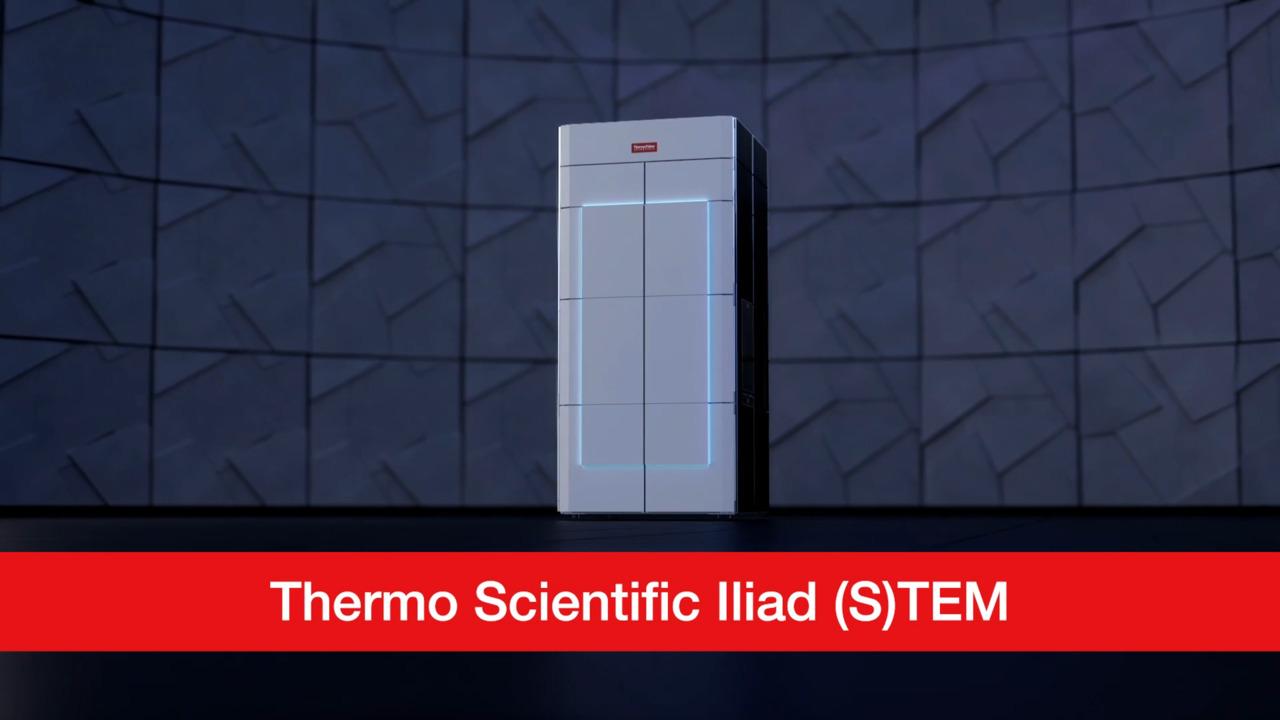Search Thermo Fisher Scientific
用于高级材料分析的 Iliad (S)TEM
Thermo Scientific Iliad (S)TEM 采用先进的集成技术,可帮助您解决具有挑战性的科学问题并超越之前的限制。先进的谱分析能力以及剂量优化策略使其成为复杂研究的理想选择,即使是最困难的现代材料也是如此。
先进的光学集成,可实现良好的 EELS 性能
EELS 光学系统面临的挑战是通过显微镜和电子能量损失谱仪同时传输从样品到检测器的各种电子能量,而不引入色散导致的模糊或畸变。这是一个非常重要的任务,尤其是当尝试保持不同显微镜设置和不同能损谱设置之间的切换时。
LMnO3/LaFeO3 界面的原子分辨 EELS 元素分布图。
只有通过紧密集成显微镜和能损谱仪的光学元件来确保这一点,才能使显微镜中的色散聚焦与能损谱焦点相匹配。否则,电磁棱镜和十个多极体所提供的出色性能只能在一个或几个特定的实验环境中充分发挥,在转换到其他像机长度、能量分散或能量偏移时将失去此性能。我们的 EELS 能损谱仪和能量过滤器结合先进的光学元件和高稳定性,提供独特的集成透射电镜光学系统,以改善 EELS 数据采集体验。
TbScO3 的原子分辨 EELS 元素分布图,以绿色显示 Tb, Sc 以红色显示。
NanoPulser 静电电子束阀门
在电子显微镜中使用静电电子束阀门可优化电子剂量。它有选择性地阻挡电子束,从而以高频率有效地在样品上打开和关闭电子束。TEMs 通常使用磁偏转器,其响应时间仅为毫秒,并且不像静电偏转器那样具有可重复性。Nanopulser — 一种静电光束阀门—可对达到样品的电子量进行精确的时间控制,并支持各种应用,例如剂量优化研究。
当电子束阀门运作时,通过(左)传统的 STEM 设置(无阻挡)和(右)脉冲束扫描,使用电子束在样品上扫描,可在扫描时提供 50% 的电子束遮挡,从而完全消除回滞信号。
Velox 软件
适用于透射电子显微镜的先进 Thermo Scientific Velox 软件可提供完整的实验控制。它便于使用扫描透射电子显微镜 (STEM 和 TEM) 光学元件和检测器,从而提高了重现性﹑产量以及对材料 STEM 和 TEM 定量分析的支持。
Velox 软件具有集成的符合人机工效学的用户界面和易用性,可提供高质量的成像和成分映射。集成的 SmartCam 可实现实验的高效设置。此外,它还具有交互式检测器布局界面,可用于优化实验控制和多检测器工具上的记录。Velox 软件支持对轻元素和重元素进行高对比度原子成像,可实现针对动态研究的灵活 STEM 和 TEM 视频记录。
使用 Velox 软件增强 EELS 和 EDS 能谱
Velox 软件配备了独特的软件包,适用于 Thermo Scientific 的电子能量损失谱和能谱数据。这款强大的谱图引擎集成了多种透射电镜相关技术,可确保以高产量采集出色的谱学图像。该软件还在采集和快速后处理 EELS 和 EDS 数据期间提供实时反馈。
总体而言, Velox 软件是一款强大的工具,可在透射电子显微镜中提供出色的控制﹑品质和多功能性,使其成为科学研究生态系统的重要组成部分。
高能量分辨率电子枪
Iliad (S)TEM 可提供高能量分辨率 X-FEG/Mono 或超高能量分辨率 X-FEG/UltiMono 电子枪的配置选项。两种电子源都会自动调节,以获得 EELS 实验所需的出色能量分辨率。工作范围为 30–300 kV ,适合多种实验,包括 STEM-EDS 元素分布﹑EELS 和超高分辨率 STEM。
冷场发射电子枪
Iliad (S)TEM 可选择具有高亮度和低能量分散的冷场发射电子枪 (X-CFEG)。其工作电压为 30–300 kV,提供高分辨率 STEM 成像和高电子束流。X-CFEG 使您可灵活地对电子束流和能量分辨率进行调节,从而实现更广泛的实验。每个工作日只需 flashing 电子枪一次,并且对电子束像差或电子枪寿命没有影响。X-CFEG 还支持使用大平行电子束进行标准 TEM 成像实验。
STEM 成像性能
Iliad (S)TEM 配备 X-FEG/Mono 或 X-FEG/UltiMono 电子枪,可实现市场上最高的 STEM 分辨率指标。凭借增强的机械稳定性﹑五阶聚光镜球差校正和高分辨率 (S-TWIN) 大极靴,它可在 300 kV 下实现 50 pm 的分辨率,在 60 kV 下实现 96 pm 的分辨率,在30 kV下实现 125 pm 的分辨率 且以 30 pA 或 100 pA 电子束流(配有 X-CFEG)。
Panther STEM 探测系统
用 Panther STEM 探测系统提升了 Iliad (S)TEM 上的 STEM 成像。该探测器包括两个总共 16 分割的新型固态检测器,具有高级的成像功能和单电子灵敏度。优化信号链和低剂量成像实现了电子束敏感材料成像,而可扩展的架构可将检测器段与同步多种信号相结合以实现创新的 STEM 技术。
4D STEM 探头
Iliad ( S)TEM 可配置电子显微镜像素阵列探头 (EMPAD) 或具有速度增强功能的 Thermo Scientific Ceta 相机,以用于 4D STEM 数据采集。
EMPAD 提供高动态范围﹑信噪比和速度,使其成为 4D STEM 应用的出色选择。Ceta 相机提供更高分辨率的衍射图像,适用于应变测量和 EDS 分析等应用。有关更多信息,请参阅 EMPAD 数据表。
Lorentz 显微镜
可以使用 Iliad (S)TEM 在无磁场模式下研究本征磁性结构。可在整个样品体积范围内实现零磁场配置,因此可在 TEM 和 STEM 模式下进行实验。这支持高分辨率研究,例如 DPC 或叠层成像。它还可以进行原位磁化,以在实际操作条件下观察结构的行为。
For Research Use Only. Not for use in diagnostic procedures.
